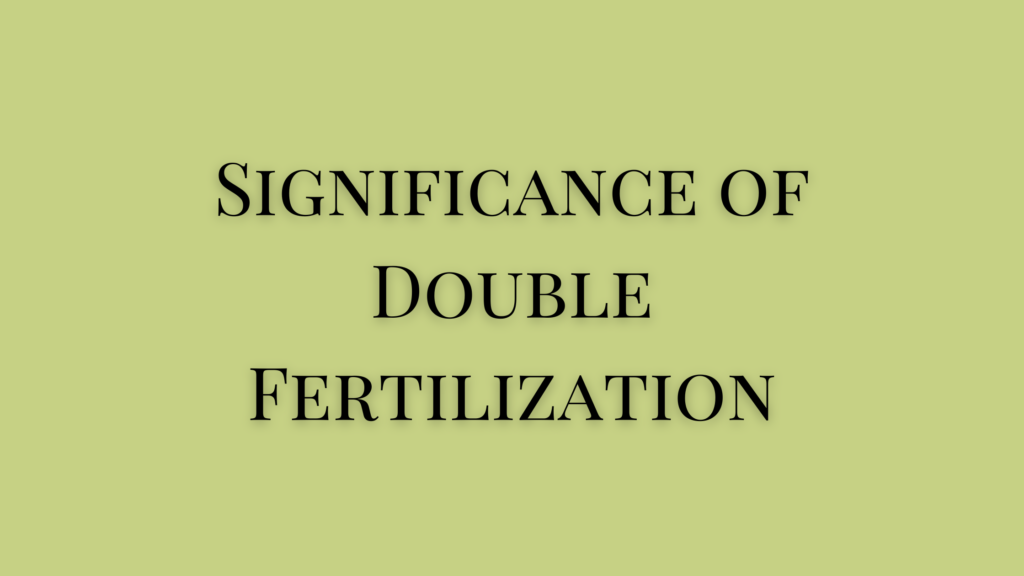In angiosperms, the occurrence of syngamy and triple fusion together is called double fertilization. The significance of double fertilization in angiosperms is that it ensures the formation of both embryo and endosperm for a healthy seed.
Syngamy is the fusion of one of the two male gametes with the egg or female gamete to form the zygote. The other male gamete fuses with the diploid secondary nucleus to form a triploid nucleus. Since the two male gametes fuse with separate nuclei, it is called double fertilization.
Fertilization in Angiosperms
Fertilization in angiosperms occurs after pollination and germination of the pollen tube. One of the male gamete released from the pollen tube will fertilize the haploid egg cell to form the embryo.
In most plants, a single pollen grain develops a single unbranched pollen tube that reaches the embryo sac. However, in some cases, one pollen grain develops multiple pollen tubes. In some cases, only one pollen grain develops a branched pollen tube. Here, only one branch will mature and survive to reach the embryo sac.
The pollen tube can take as little as 15 minutes or as long as a few days or months to reach the embryo sac. In Orchadiaceae where the embryo sac development is delayed, it may take up to 7 months for the pollen tube to reach the embryo sac.
The pollen tube carries two male nuclei. One of them fuses with the egg nucleus in a process called syngamy.
The result of syngamy will form the embryo inside the seed. When syngamy is absent or fails to occur, the resultant seeds become non-viable.
Double Fertilization
The second nucleus from the pollen tube fuses with the diploid central nucleus to form the endosperm in a process called double fertilization. The fusion of the second male gamete and diploid nuclei is called triple fusion.
Endosperm is the nourishing tissue that helps the embryo survive. This process is absent in some seeds that will only have embryos. Such embryos either perish or become non-viable due to the unavailability of nutrition.
In addition to these, syngamy ensures or restores the diploid nature of the plant while the triple fusion helps prevent polyembryony.
Thus for the production of viable seeds in angiosperms, both syngamy and triple fusion are essential. In other words, double-fertilization is an important process to maintain the perpetuation of plants through viable seeds.
Significance of Double Fertilization
- Double fertilization is a unique mechanism in flowering plants to quickly produce seeds even under dry and unfavorable conditions.
- It lays the foundation for the embryo and endosperm formation which is highly significant from the agro-economical perspective.
- The timing and the success of the two events of double fertilization influence the development of a fertilized ovule into a viable seed.
References
- Sukumaran O R. Pre-Degree Botany. Murali Publications.
- Abraham P C. Anatomy, Embryology & Microtechnique. 1999. St. Mary’s Books & Publications.
- Paper – V – Anatomy and Embryology Unit – 4
- https://doi.org/10.1016/j.pbi.2019.11.003
- Double Fertilization On The Move




